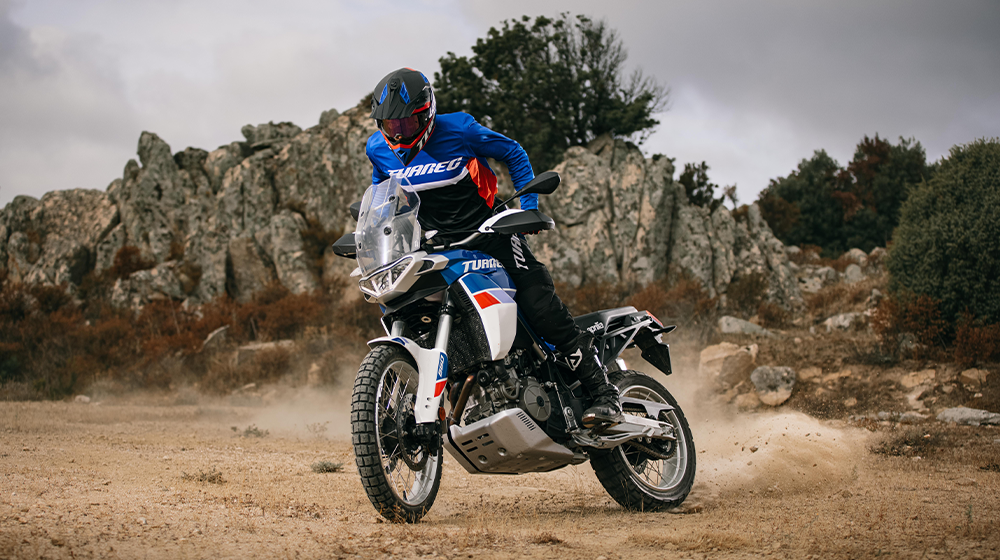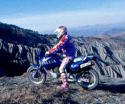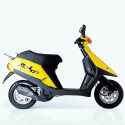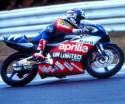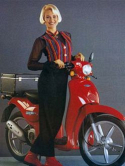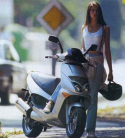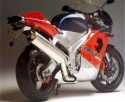-
1990
Backed by the experience matured in the World Championship, Aprilia's strategy in the production of road bikes turned increasingly to top-level technical and mechanical fittings, attractive aesthetics and an abundance of pointers towards sporting activities, as can be seen in particular in the AF1 Replica.
However, its success in the road racing championships did not result in off-road bikes being abandoned, and these remain one of the Noale factory's specialities: 1990 was the year of the Pegaso 600, the bike that was to revolutionise the sector, with its mechanics of strongly off-road origin designed for on-road use. It was an immediate success with the public, and continues to be so today.
-
1991
The Nineties saw Aprilia make a decisive entrance into the sector of urban mobility vehicles. It is in fact the scooter market that has now been growing for a considerable time.
Here again, creativity and unconventionality have proved to be the key to success. Starting from the first scooter made entirely of plastic, the Amico of 1990, Aprilia confirmed itself capable of anticipating tendencies, determining trends and offering products that are always innovative, both aesthetically and technologically, in terms of performance, reliability and low environmental impact.
The Venetian Works has always stressed this point in particular, and is among the front line in the search for state-of-the-art solutions.
In 1992, Aprilia became the first company to launch a scooter and a two-stroke motorbike with catalytic converter, the Amico LK and the Pegaso 125, respectively, while the first scooter with a four-stroke, four-valve engine went onto the drawing-board the following year.
-
1992
After the first years of experience, five years after the first victory and following numerous other racing successes, the great dream was finally realised in 1992, when the 125 cc World Championship title was won by Alessandro Gramigni, to be followed the same year by the Trial World title won by Tommy Ahvala on the Aprilia Climber.
Right from the start, Aprilia Racing has proved itself to be a source of talent, and many of the best known champions of recent years started out on the road to success riding an Aprilia, which has been ridden by world champions such as Biaggi, Capirossi Gramigni, Locatelli, Sakata and Rossi.The sporting successes grew, together with the increase in production, size and technology of the parent company, which has become increasingly well known on the international motorcycle market thanks to its characteristics of innovation, image and dynamism.
-
1993
Aprilia's care for the environment can be seen as one of its prime strategic goals, and years of investment in research, which has intensified constantly to the present day, has resulted in creation, in 2000, of the "cleanest" of engines: the Ditech (Direct Injection Technology), whose revolutionary technology gives great performance, record fuel consumption and extremely limited emissions. In 1993, a myth was born in Noale. This was the high-wheeled Scarabeo scooter, which is still unmatched today thanks to its extraordinary combination of retro and modern lines, which make it a reference point for all manufacturers in this sector.
-
1995
The list of successful Aprilia scooters can go on with Leonardo, SR, Gulliver, to mention just a few of the best-known models.
In 1995 Aprilia astounded the world with the Motò, a work of art on two wheels designed by Philippe Starck, whose unique design "wins" at the exhibition held by the New York Museum of Modern Art. In the same year, the exceptional RS 250 was also born, one of the most successful racing bikes of all times.
-
1998
In 1998, Aprilia made a grand entry into the larger bike category, launching the RSV Mille, which was nominated Bike of the Year for the reference market in 1999. Technical and styling originality, solutions derived from the experience on the racetrack and, above all, hard work and passion for every detail have resulted in an important success both in commercial and image terms. The production of larger bikes has been further intensified, and continues with the SL 1000 Falco, RST Futura, ETV mille Caponord, Tuono, the first true hypernaked on the market, while production of successful scooters such as the Atlantic, presented in various models from 125 to 500 cc, and Sportcity continues.
Haute Couture on the two wheels
Find your bike
Photo galleries
History
Back


